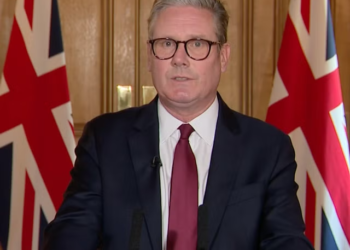The IMF Managing Director, Kristalina Georgieva has indicated that G20 economies must set a robust minimum carbon pricing as the first step to reach the ambitious Paris Agreement goals by 2030.
According to her, “this will provide a critical signal for redirecting private investment and innovation to clean technologies, and to incentivize energy efficiency. Our research is clear— without it we simply cannot reach the goals of the Paris Agreement.”
Meanwhile she underscored that this price signal needs to get predictably stronger. This is such that by 2030, the required average global price of $75 per ton of CO2, will go beyond current price of $3 per ton and up from the 23 percent current emissions coverage.
As a first priority, this will make market signals work for the new climate economy, not against it, she asserted. However, she noted that this was masked with some political hurdles but the more reason the world needs to rid itself from all forms of fossil fuel subsidies.
“Defined broadly to include undercharging for supply and environmental and health costs, they are equivalent to more than 5 trillion dollars annually— and we will soon publish an updated research on the exact composition of these subsidies.”
“A higher level of ambition is an International Carbon Price Floor agreement among major emitters— staff at the IMF have elaborated in a recent proposal how this could work, and we will continue to expand our policy research in this area.”
Kristalina Georgieva, IMF Managing Director
This notwithstanding, she highlighted carbon pricing was not all there is to solve this canker. She therefore prescribed that countries must ardently focus on green investments.
“Radically decarbonizing our economies will require a substantial scaling-up of investment over the next two decades. The shift to renewables, new electricity networks, energy efficiency, low carbon mobility— offer a huge investment opportunity.
“And it’s a huge opportunity for growth and jobs. Research by IMF staff shows how deficit-financed green supply policies could raise global GDP by about 2 percent this decade and create millions of jobs.”
From this viewpoint, on average around 30 percent of new investment is expected to come from public sources which will serve as a springboard for the remaining 70 per cent from private sources. This means that by prioritizing green recovery packages, green budgeting, and green finance, this can be achieved.
Furthermore, she observed that International public finance can help reduce both costs and perceived risks. Governments can help provide the infrastructure to support the deployment of low-carbon technologies in response to carbon pricing.
Also, financial sector policies such as green taxonomies and common risks disclosures can steer private investment toward sustainable projects.
The third global policy priority is a “just transition”, within and across countries, she hinted, while noting that to arrive at this, the shift to a low-carbon economy must be fair and benefit all.
“Within countries we must recognize that decarbonization would impact vulnerable households, as well as businesses and workers currently deployed in sectors with high emissions. Fair compensation measures will be required.”
Kristalina Georgieva, IMF Managing Director
For example, revenues from carbon pricing schemes can fund cash transfers, social safety nets, worker retraining, and relocation schemes. And place-based policies can help develop new low-carbon industries and jobs through green investments.
Moreover, she suggested that across countries, help must be provided to having to handle the “double challenge of increasing energy access while reducing their carbon footprint.” Another group are those faced with costs associated with adapting to the impact of climate change coupled with limited fiscal space. These will need the help of the international community, she opined.
READ ALSO: Ghana’s Airline traffic and tourist arrivals to remain dulled in the near term





















